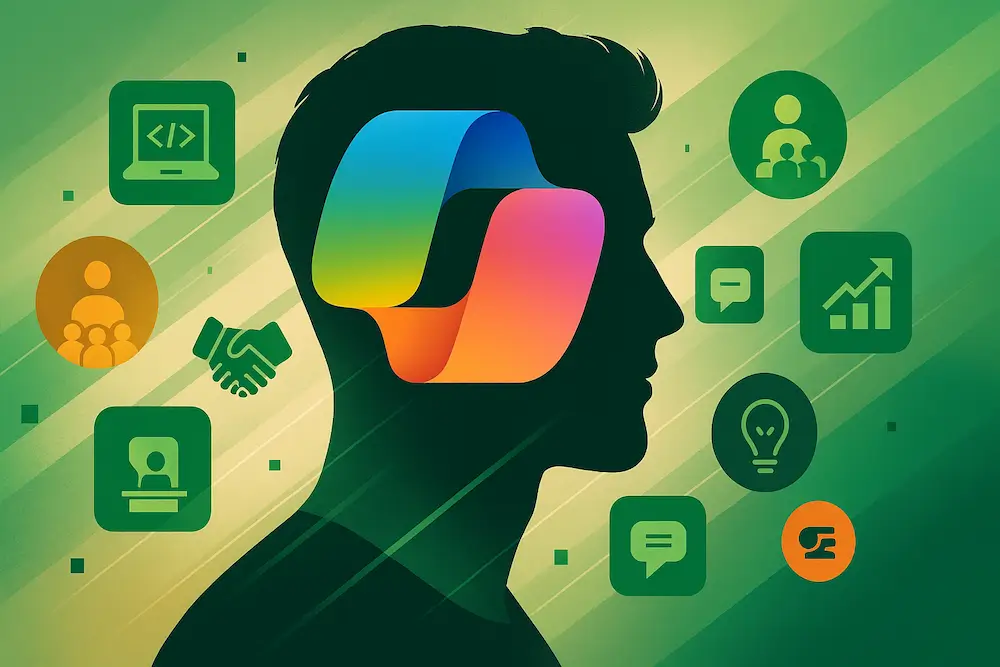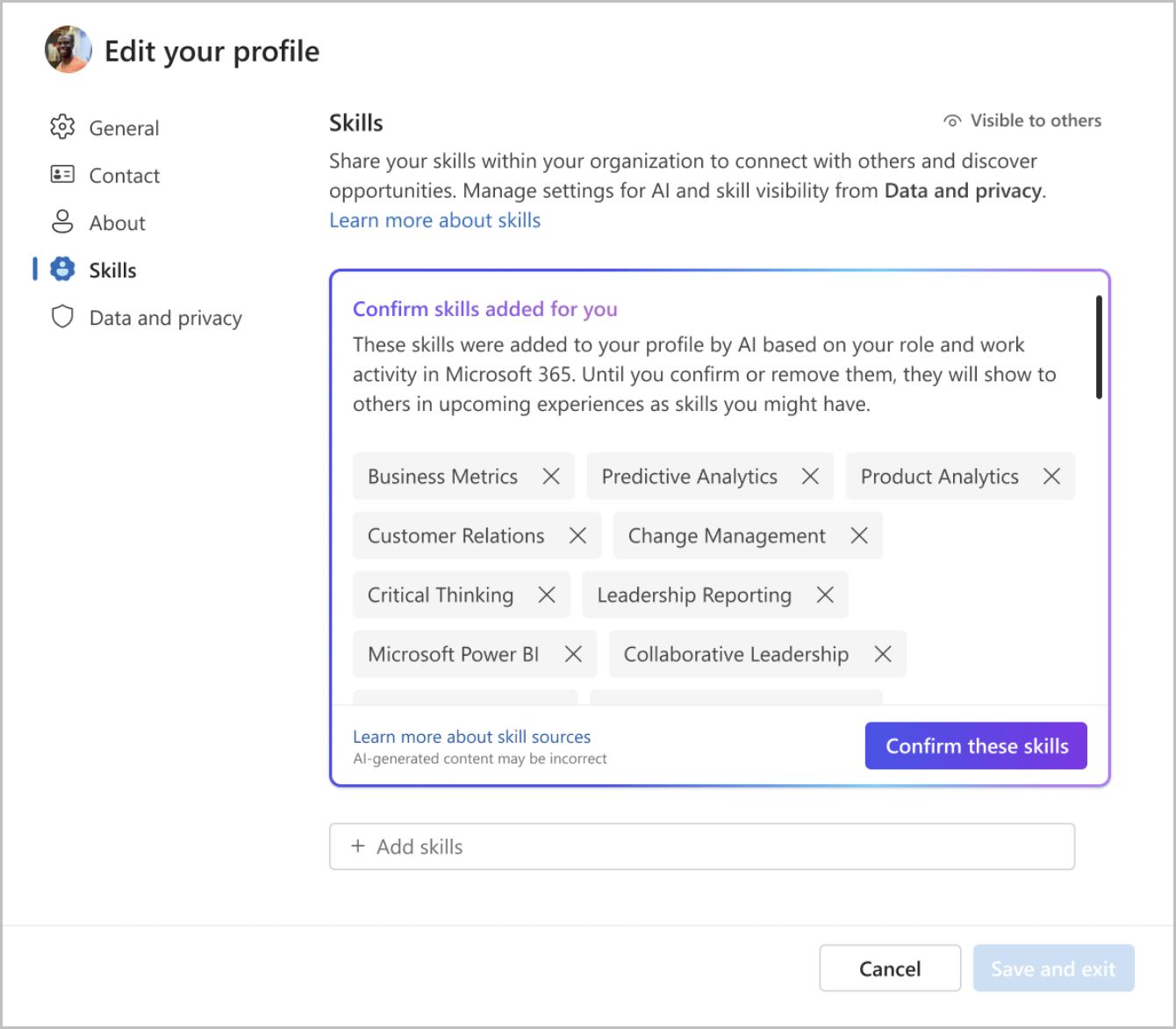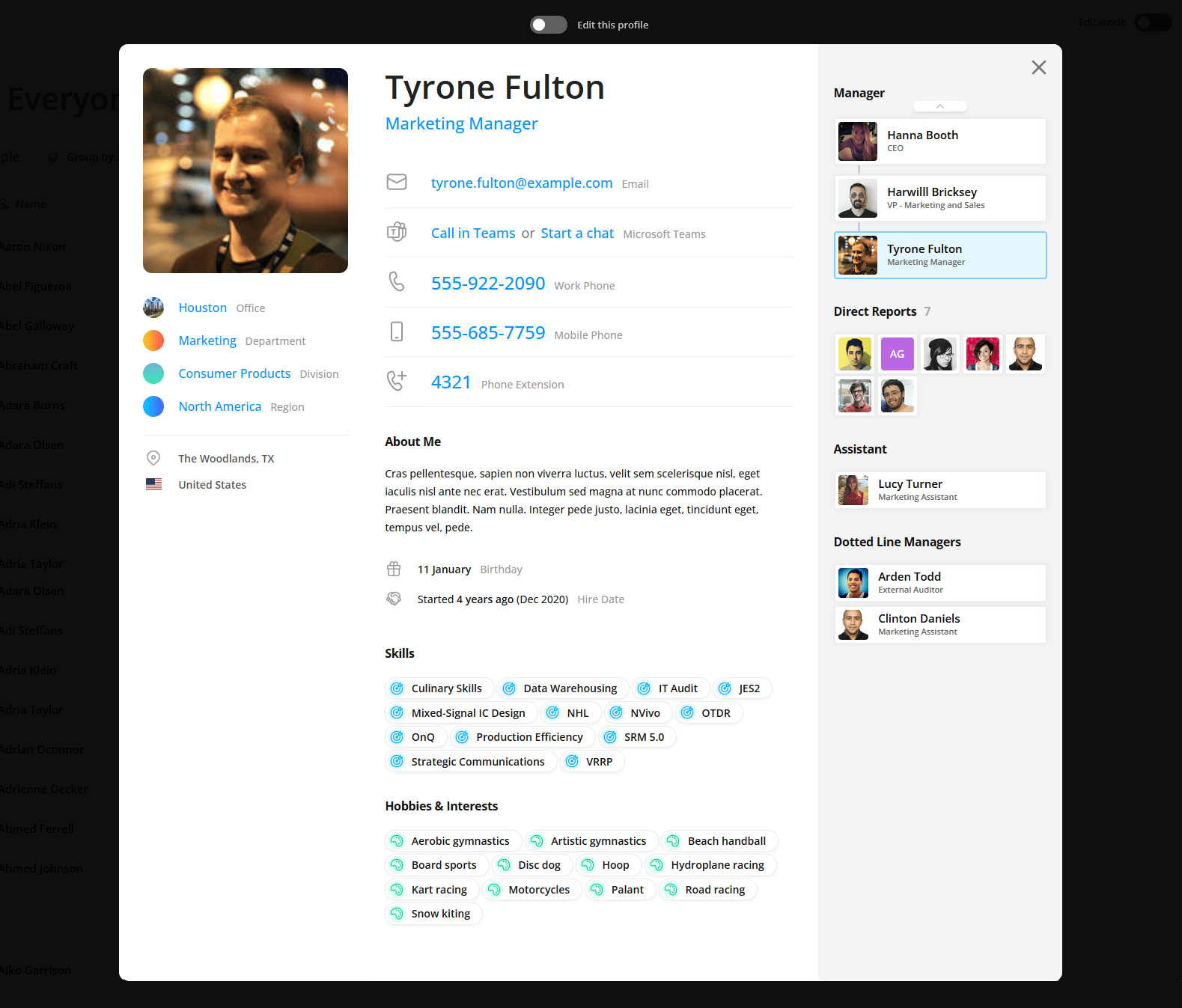Microsoft 365 People Skills: How to Turn Skills Data into a Usable Directory with OneDirectory
Microsoft 365 People Skills creates an AI-driven skills profile for every employee based on their everyday work in Microsoft 365. When you connect that intelligence to OneDirectory, you turn raw skills data into a clean, searchable skills directory.

Skills are the real currency of your workplace.
They determine who gets projects done, who solves tricky problems, and who helps teams move faster.
The challenge?
Most companies don’t actually know who has what skills, or how to connect the right people at the right time.
That’s where Microsoft 365 People Skills comes in. It quietly listens to everyday work signals and builds a living skills graph of your organization. Suddenly, it’s easier to see who knows what, where expertise is clustered, and how to connect employees more effectively.
In this article, we’ll break down how People Skills works, what you need to roll it out (licenses, dependencies, and all), the limitations you should keep in mind, and, most importantly, two practical ways to make these skills truly discoverable and useful with OneDirectory.
What is Microsoft 365 People Skills?
Microsoft 365 People Skills is an AI-driven service that builds a personalized skills profile for every user, mapped to a customizable taxonomy.
It forms a skills data layer that enhances Microsoft 365 Copilot, Microsoft 365 experiences, and Viva services with skills-driven scenarios.
Where it shows up today:
- Profile card across Microsoft 365 (e.g., Outlook on the web and Windows, Office.com, SharePoint) so users can view/confirm skills and see others’ skills as they collaborate.
- Org Explorer and People Companion to find colleagues by skill.
- Viva Learning for skills‑based recommendations.
- Copilot Analytics (Viva Insights) for organization‑level “skills landscape” reporting.

How Microsoft 365 People Skills Works Under the Hood
The inference engine uses Microsoft Graph profile and activity signals, documents, emails, chats, meetings, plus Microsoft’s skills taxonomy (powered by LinkedIn’s Microsoft Skills Graph) to infer a representative set of skills for each user.
Key operational details & constraints
- Data Sources: Inferences come only from Microsoft 365 sources (not other LOB apps).
- Data Freshness: Initial inferences typically appear within 48 hours (up to five days); thereafter, the system refreshes about every 30 days and ignores activity older than 90 days.
- Responsible AI: You can mark skills as AI‑restricted to keep them out of inferences.
Licensing, Service Plans, and Where Features Land
There’s no separate People Skills license.
Access is included with your Microsoft 365 Copilot and/or Viva licenses, with capabilities varying by service plan:
- People Skills – Foundation (for commercial tenants without Copilot): skills service without AI inferencing/Copilot. Users can search and add skills from your taxonomy or imports via the profile editor.
- People Skills – Advanced (Viva Suite/Insights/Workplace Analytics/Feedback and Viva Learning customers): includes AI inferencing, not Copilot.
- Microsoft 365 Copilot in Productivity Apps: includes AI inferencing and Copilot skills experiences
Microsoft 365 People Skills Setup at a Glance
- Who can set it up?
- AI administrator or Knowledge administrator.
- Where to find it in the Admin Center?
- Copilot page → People Skills in Microsoft 365 Copilot (or Settings > Viva > Data Management).
- Quick setup uses Microsoft’s 16,000+ out‑of‑the‑box skills library; advanced setup lets you import custom skills and (optionally) map skills to roles. Expect the first AI inferences to appear within 48 hours (up to 5 days).
- Skills Dataset Import/Export
- You can import skills for users (e.g., from HR systems) via Organization Data Ingestion templates; you can export confirmed skills via the Microsoft Graph Profile API (AI‑generated skills are not exportable today).
Governance, Privacy & Controls for People Skills
People Skills offers access policies to control AI inferencing and visibility of skills at the tenant, group, or user level, including Works Council‑friendly pilots.
Today, these policies are configured via PowerShell (Feature Access Management).
You can opt users in/out of inferencing, disable inferencing entirely, and separately manage visibility of AI‑generated and imported skills, plus decide whether to share skills data with Viva Insights.
People Skills Practical Limitations to Plan For
- Signals scope: Inferences look only at Microsoft 365 activity (not third‑party business apps). If much of your work happens outside M365, expect fewer/broader inferences.
- Latency & cadence: First inferences take up to 5 days; refresh is about every 30 days; activity older than 90 days isn’t considered.
- Exportability: Only confirmed skills can be exported programmatically (Graph); AI‑generated skills aren’t exportable at this time.
- Admin ops: Some sharing/inferencing controls are PowerShell‑only for now.
- UPA impact: Legacy UPA “skills” are hidden on the profile card once People Skills is enabled; plan for downstream app dependencies.
- Licensing envelope: Capabilities differ by plan (Foundation/Advanced/Copilot), and EDU tenants are excluded from People Skills availability.
Two Ways to Bring Microsoft People Skills to Life with OneDirectory
Option 1: Sync Microsoft 365 People Skills into OneDirectory
Use Microsoft 365 as your system of record for skills, and let OneDirectory do what it does best: beautiful, searchable employee profiles and skill aggregation pages.
What this looks like:
- Visual skills on profiles: OneDirectory syncs each person’s skills and renders them as clean, scannable tags with descriptions.
- Instant discovery: Search by skill and filter across departments, locations, and job levels.
- Aggregate by skill: Each skill gets a dedicated page that shows everyone who has that skill, making it effortless to form project teams and communities of practice.
Notes on data flow:
- OneDirectory can sync confirmed and admin‑imported skills from Microsoft 365 via supported APIs. Because AI‑generated skills aren’t exportable today, those won’t flow via Graph until Microsoft enables them. (Employees can still see AI‑generated skills inside Microsoft 365 surfaces.)
When to choose Option 1
- You want Copilot and Viva experiences to remain primary, with the directory as the friendly front‑end.
- You have an HRIS/skills initiative already mapped into People Skills, and you want one taxonomy across Microsoft 365 and the directory.
- You’re okay with confirmed skills being the shareable “source of truth” across systems today.
Option 2: Use the OneDirectory® Skills Dataset
If you need a richer taxonomy or want to start quickly without waiting for Microsoft 365 inferencing to mature, OneDirectory offers a Skills Dataset with 37,000+ built‑in, customizable skills.
What you get:
- Skills directory at scale: A ready‑to‑use, comprehensive skill library covering technical, functional, soft, and domain skills, fully customizable.
- Skill discovery that feels natural: OneDirectory indexes skills from employee profiles and gives each skill its own page. Click any skill tag to instantly see everyone who has it, helping you find subject matter experts, uncover hidden talent, and connect employees through shared expertise.
- Flexible adoption: Seed profiles with the OneDirectory dataset, then map or merge with People Skills later.
When to choose Option 2:
- You need deep coverage beyond the Microsoft 365 out‑of‑the‑box library (16,000+ skills) right away.
- Your workforce does a lot of work outside Microsoft 365, so AI inference isn’t (yet) representative.
- You’re in a pilot or EDU scenario where People Skills availability or features are limited, but you still want a robust skills directory now.

Microsoft 365 People Skills Implementation Checklist
- Confirm licensing and plan your target experience set (profile card, Copilot, Viva Learning, Viva Insights.
- Assign admin roles (AI administrator or Knowledge administrator).
- Choose your library path:
- Quick start with Microsoft’s 16,000+ OOB skills; or
- Build a custom library (CSV templates; optional role‑to‑skill mapping).
- Decide data sharing with Viva Insights (skills landscape) and set inference/visibility policies (PowerShell).
- Plan for exports (confirmed skills only) and integration boundaries.
- Pick your OneDirectory approach (Sync People Skills vs. OneDirectory Skills Dataset) and define your taxonomy governance (owners, change process, restricted skills).
- Roll out in phases (pilot access policies → organization‑wide), monitor adoption, and iterate.
Final Thoughts
Microsoft 365 People Skills gives your organization a shared, AI‑assisted language for skills that shows up right where people work.
OneDirectory turns that foundation into an employee discovery superpower, with polished profiles, dedicated skill pages, and blazing‑fast search.
Whether you sync Microsoft 365 People Skills data or bootstrap with the OneDirectory® Skills Dataset, you’ll help employees find experts faster, form smarter teams, and connect through shared expertise, all while staying aligned with Microsoft’s governance and privacy controls.


